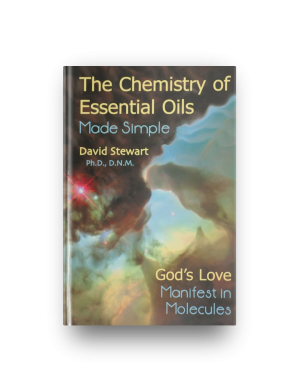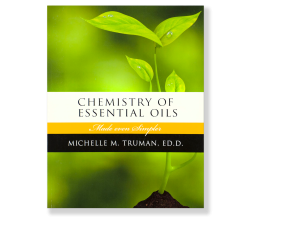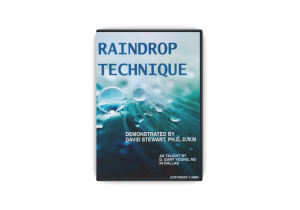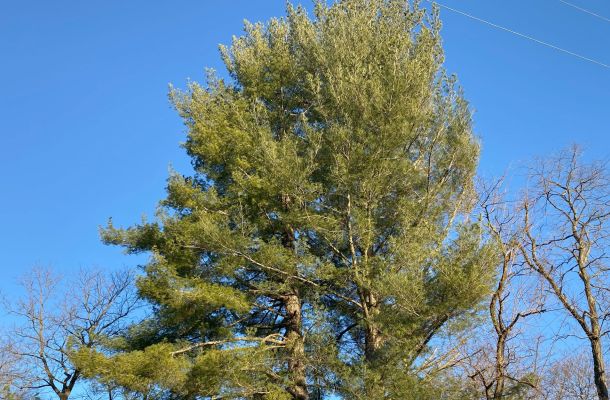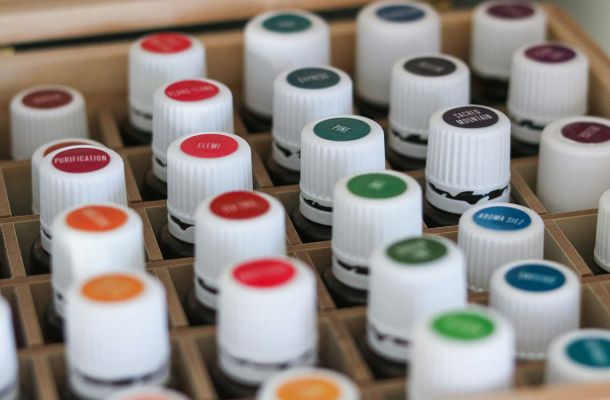The Non-Sweet Truth about Non-Nutritive Sweeteners – Volume 3, Number 7
Please feel free to share this newsletter!
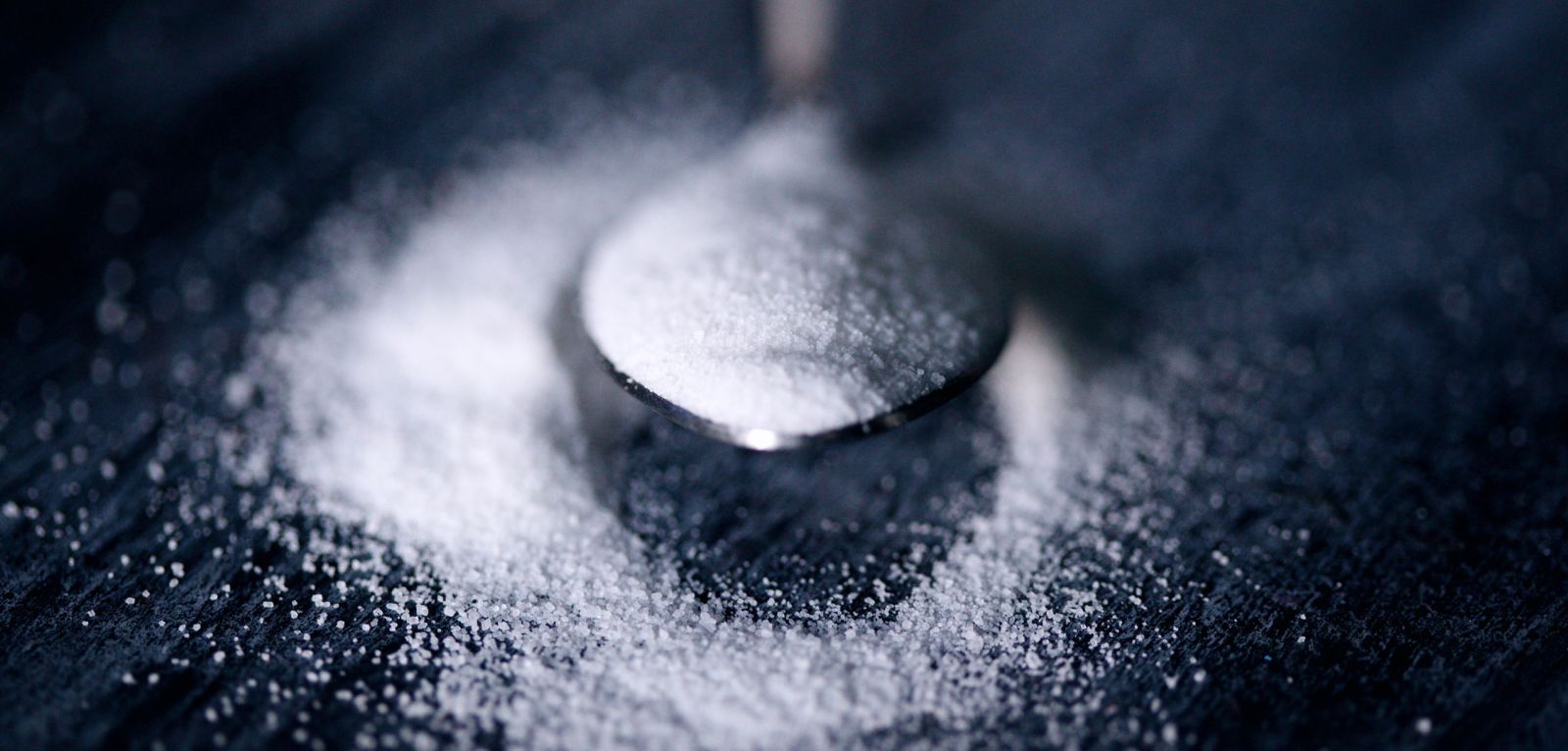
Raindrop Messenger
Official Newsletter of CARE
The Center for Aromatherapy Research and Education
12923 BCR 800, Marble Hill, Missouri USA 63764
(573) 238-4846
NOTE: The information in this newsletter is intended for education purposes only. It is not provided in order to diagnose, prescribe, or treat any disease, illness, or injured condition of the body or mind. Anyone suffering from any disease, illness, or injury should consult with a physician or other appropriate licensed health care professional.
The Non-Sweet Truth about Non-Nutritive Sweeteners
By David Stewart, PH.D., R.A.
Originally Posted December 2005
Non-nutritive sweeteners are popular. They promise the taste pleasures and satisfaction of white sugar (sucrose) without the calories and without upsetting the balance of sugars in your blood. But what is the meaning of “non-nutritive?” And do you really want non-nutritive products in your body?
This brief review will discuss the following: Saccharin (Sweet ‘N Low®), Stevia, Cyclamate, Sorbitol, Aspartame (NutraSweet®), Sucralose (Splenda®), raw sugar, and sucrose (white sugar).
The Meaning of Non-Nutritive
A non-nutritive substance is one your body cannot metabolize, or can only partially metabolize. The theory is that such substances pass harmless through your system with no effect, either good or bad. Hence, if you can find a substance that tastes like sugar but does not metabolize or release its calories then you can literally have your cake and eat it too without fear of weight gain or other undesirable bodily reactions such as hyperglycemia or high blood sugar.
The problem is that most sugar substitutes are unnatural. They are synthesized in laboratories. They are unique on this planet in that these molecules never existed before they were manufactured in modern times. Drug companies who make and market such synthetics don’t like natural substances because they cannot be patented to obtain a monopoly. Anyone can produce and sell a natural product. Access to them is the right of everyone.
Drug companies and other manufacturers of unnatural products don’t like a competitive free market because it prevents them from price gouging and merchandise manipulation. They want monopolies. Monopolies reap maximum profits and give a company complete control of the market on the products they can patent. The only patentable molecules are those that do not exist in nature, manufactured by men, not by God.
The problem is that God made our bodies to deal with the molecules he made, but our bodies were not made to handle the strange synthetic molecules of engineered drugs and non-nutritive sweeteners. Such molecules confound and confuse our cellular intelligence and universally cause undesirable side effects. That’s right. Universally. All man-made substances carry some level of risk to human health. The trouble is that the risk may not be obvious at first. It can take time for the damage to become apparent, even years. And even when it becomes evident, the connection between the sickness or condition and the offending substance may take years of research to rigorously prove. Meanwhile, people’s health deteriorates, people get sick, people suffer, and people die.
The First Law of Unnatural Substances
The first rule you can apply when determining if you want to ingest any particular substance or not is this: If it is not natural, there will be some negative consequences. They will always be there even if you don’t detect them right away. There are no exceptions to this. Always assume that it is not good for you, and you will always be right. You don’t need to wait for the scientific studies to discover the details and confirm your doubts. God did not design your body to handle products he did not make. That is why pharmaceutical drugs and artificial sweeteners always carry risks of ill effects. The effects may cumulative over a period of years. They may be sooner and worse for some than for others. But they will always be there, whether recognized or not. You can count on it. It is a law of God’s creation.
By comparison, if it is a natural substance and not naturally toxic, as some herbal substances are, your body can utilize it, metabolize it, and eliminate it with its break-down products while gleaning whatever benefits it may convey. God designed your body to handle his products. That is why proper use of herbs and essential oils carry benefits without risks of ill effects.
One of the more insidious aspects of unnatural substances is our body’s inability to secrete them and/or their break-down products. When strange unnatural molecules come into the body, our body’s organs are thrown into confusion as to what to do with them. After the body passes these substances around from the digestive system, to the blood, to the liver, to the kidneys, to the brain, to this organ and that, and elsewhere, not knowing what else to do with them, the body eventually stores them in fat tissues to be dealt with later. Later can be years, even decades. Meanwhile, our bodily processes are perturbed and disrupted by these resident aliens in ways that reduce our state of wellness, eventually resulting in a chronic disease or condition and premature death. Putting two and two together to make the causative connection is rarely done, least of all by medically trained personnel who are neither educated nor encouraged to seek such causes. Figuring out such things is up to you. Avoiding them is entirely up to you.
Saccharin (aka Sweet ‘N Low®)
Saccharin is one of the oldest sugar substitutes to be marketed, dating back to the 1800s. It is also known as Gluside, Glucid, Garantose, Saccharinol, Saccharinose, Saccharol, Saxin, Sykose, and Hermesetas. It is currently sold under the brand name of Sweet ‘N Low®, a product that is a blend of nutritive sugar (dextrose) and saccharin (3.6%). Sweet ‘N Low was trademarked in 1957 along with its marketing color, pink, by the Cumberland Packing Corp. of Brooklyn, New York, a company that specializing in packaging, not food products.
Saccharin can be said to be natural, but only in the sense that it exists in nature as a component of coal. It is a coal tar derivative. It is not natural in that you would ever ingest it from a natural food.
The chemical formula for saccharin is C7H5NO3S. The molecular structure consists of two rings: one consisting of six carbon atoms in a hexagon and the second of three carbons, one nitrogen, and one sulfur atom arranged in a pentagon with three double-bonded oxygen atoms attached to the perimeter. Its molecular weight is 183 amu (atomic mass units).
Saccharin has long been suspected of causing cancer, since many coal tar derivatives are carcinogenic. It was eventually put on the U.S. FDA’s carcinogen list in 1998. However, in 2000 it was removed for lack of sufficient data to meet the FDA’s criteria for a carcinogen. No doubt, the manufacturers of Sweet ‘N Low® were influential in the FDA’s reversal decision.
In animal studies with saccharin it takes only 3/100s of an ounce for a mouse weighing 5 ounces to have a 50:50 chance of dying from the substance. Translated to humans, this suggests that it would take a pound of saccharin ingested at one setting to kill a 160 lb man. No one is going to intake that much saccharin at once. But this statistic does not address the long term effects which can be cumulative. It also does not address the potential disruption to our hormonal, nervous, digestive, eliminative, metabolic, and cardiac systems. Substances can be damaging to our health without killing us.
Saccharin is said to be 400 times sweeter than white sugar. These comparison figures are somewhat subjective in that they are obtained by diluting saccharin in water until its sweetness is barely detectable to humans. Some humans have more sensitive taste buds than others. Most people cannot taste white sugar in concentrations less than 1:150. Saccharin can be detected by human taste at dilutions of 1:60,000, which is approximately 1/400th the concentration at which sugar can be tasted.
Cyclamic Acid (aka Cyclamate®)
The sweetness of cyclamic acid was discovered by a graduate student at the University of Illinois in 1937. It was subsequently patented by the Du Pont Chemical Company and sold as a non-nutritive sweetener starting in the 1940s. Cyclamate was classified as a non-nutritive sweetener. It is not a natural substance. It was eventually taken off of the market for its proven carcinogenicity.
The formula for Cyclamic Acid is C6H13NO3S. Structurally, the molecule consists of a single ring of six carbon atoms in a hexagon connected to a chain of other atoms, hydrogen, oxygen, sulfur, and nitrogen. Its molecular weight is 179 amu, very close to that of saccharin. Notice the similarity of its chemical formula with that of saccharin shown above.
Cyclamate is considered to be approximately 70 times sweeter than sugar. Its taste is still detectable in dilute concentrations of 1:10,000. Interestingly, the lethal dose for 50% of a population of research mice (weighing 5 ounces each) to die each is less than for saccharin. It takes three times as much cyclamate to kill a mouse than saccharin. Oddly, the lethal dose for a rat is less per pound of body weight than for a mouse, mice being more resistive to its toxicity than rats.
Stevioside (aka Stevia)
Stevioside is natural. It is the sweet compound isolated from the leaves of Stevia rebaudiana also called yerba dulce. A member of the aster family (Compositae or Asteraceae), stevia is a plant native to Paraguay, South America. Stevioside is marketed as Stevia and/or Steviosin.
The chemical formula for stevioside is C38H60O18. Its structure is very complex, consisting of seven hexagonal rings and one pentagonal ring connected in a complicated and convoluted manner. It is a huge molecule whose molecular weight is 805 amu.
Stevioside is easily metabolized and utilized by the human body, it generates virtually no useable calories and, hence, is a non-caloric food substance. Furthermore, it has been shown to have many benefits to human bodily processes, including maintenance of proper levels of blood sugar. It has no known untoward side effects.
It would be hard to overdose on stevia or stevioside since it is 300 times sweeter than sugar. Its flavor is evident in concentrations as low as 1:45,000. If it has a lethal dosage in mice or men, such data does not seem to be available.
While drug companies have no interest in marketing stevioside, there is a synthetic derivative of stevioside has been made in a lab and has been proposed as a non-nutritive sweetening agent. It is called steviol. So far, no drug or chemical company has tried to market steviol. But if you ever see it on a product label, know that steviol, while derived from a natural substance is not, itself, natural.
Young Living puts natural stevioside (leaves of Stevia rebaudiana) in Sulfurzyme its MSM (methylsulfanylmethane), supplement, to counter the bitterness of MSM.
Sorbitol (aka Sorbit®, Cystosol®, etc.)
Sorbitol is a natural substance sold under many brand names including Sorbit®, Cystosol®, Resulax®, Sorbilax®, Sorbitur®, Sorbo®, Sorbostyl®, and Sorbilande®. It is a simple sugar found in strawberries, black berries, blue berries, raspberries, wolf berries, cherries, plums, pears, apples, seaweed, algae, black strap molasses, and the ripe fruit of mountain ash.
The chemical formula for sorbitol is C6H14O6. Structurally, its molecular shape is different than every other sweetener discussed in this article in that it contains no rings. It is a linear chain of six carbon atoms with a water molecule attached to each carbon and an extra hydrogen atom at each end of the molecule. Its molecular weight is 180 which is almost the same as saccharin and cyclamate, but only half the weight of sucrose or table sugar. It is also comparable in weight to fructose and glucose, two other natural sugars (monosaccarides), which weigh 178 amu each. Glucose (C6H12O6) is the sugar utilized directly by the cells of our bodies.
Sorbitol is pleasant and tastes very much like white sugar with no aftertaste. In fact, it is sometimes mixed with saccharin to reduce its aftertaste. While it releases 3.9 calories per gram when digested (same as sugar), its metabolic products are different. Instead of breaking down into fructose and glucose like sugar, 70% is broken down into carbon dioxide or CO2. Hence, sorbitol is an excellent sweetener for diabetics and people with blood sugar balancing problems since its effect on blood sugar is negligible compared to sucrose.
However, sorbitol is not easily available to the public as a pure substance. It is not suitable as a frequently ingested sweetener because it is a natural laxative. In fact, most of the trade names under which it is sold are names for laxatives. In small quantities in foods and fruits, it is fine and won’t cause diarrhea.
Sorbitol is used in candy manufacturing (combined with sucrose) because it increases shelf-life. It is a common sweetener in chewing gums. It is a softener for shredded coconut and peanut butter. It is used in soft drinks and wines and is the sweetness of flavored cigars. It is used in pharmaceutical preparations in that it increases absorption of vitamins and medicines. In fact, it is used in the synthetic production of ascorbic acid and vitamin C. It also has non-nutritive industrial applications such as in the production of propylene glycol, synthetic plasticizers, moisture conditioners for printing rolls, the tanning of leather, writing inks, and antifreeze.
Medically it is used as a laxative and diuretic with no known negative effects provided dosages are controlled. As a natural food additive, it is harmless and can have many benefits. But sorbitol is not going to be the answer to your sweet tooth if you want to reduce calories.
Aspartame (aka NutraSweet®)
Aspartame is another popular non-nutritive sweetener sold under the brand names of NutraSweet®, Equal®, and Sanecta®. It was patented in 1968 by the G.D. Searle Company, a subsidiary of Pharmacia & Upjohn, Inc., of Peapack, New Jersey. Searle and Upjohn are primarily prescription drug companies.
The chemical formula for aspartame is C14H18N2O5. Structurally, it starts with a hexagonal ring of carbon atoms, like saccharin and cyclamate. However, attached to the ring is a long chain of carbon, hydrogen, oxygen, and nitrogen atoms. Its molecular weight is 294 amu, considerably heavier than saccharin or cyclamate. Larger molecules can remain in the body longer and, if toxic, can cause trouble for much longer periods of time.
NutraSweet has been on the market long enough for its dangers to have been well documented. This information is available to the public via a number of books, articles, and websites. Do a search on Google or any other search engine and you will get hundreds of sources addressing both the pros and cons. Some of the metabolic products formed in our bodies when we eat aspartame are methyl alcohol, aspartic acid, and formaldehyde.
Methyl alcohol (methanol) in sufficient quantities can make you go blind. In larger quantities it can cause death.
Aspartic acid disrupts neural activity, interferes with protein synthesis, and can alter DNA.
Formaldehyde has its own toxic consequences and is used to preserve animal specimens in laboratories as well as for embalming bodies.
Aspartame is suspected of being linked to a variety of ailments including epilepsy, multiple sclerosis, brain tumors, birth defects, lymphoma, diabetes, Alzheimer’s disease, fibromyalgia, migraine headaches, various nervous disorders, and adverse personality changes.
Aspartame is said to be 160 times sweeter than sucrose (white sugar). The human tongue can sense its sweetness in concentrations dissolved in water of 1:24,000 compared to sugar which is no longer discernable to taste in concentrations less than 1:150.
Sucralose (aka Splenda ® )
Sucralose, sold under the brand name of Splenda ®, has now become the most popular non-nutritive sweetener of all time. It is also called TGS, an acronym taken from its technical name, Trichlorotrideoxy-Galacto-Sucrose. Sucralose was discovered by scientists at the University of London in 1977 working under funding provided by Tate & Lyle, an international British firm based in London. It was patented that same year by Tate & Lyle, who are the sole manufacturers and distributors of Splenda worldwide.
Tate & Lyle are a multi-billion dollar corporation specializing in renewable and consumable products manufactured principally from wheat, corn, and sugar. They operate 41 manufacturing plants and 20 additional production facilities in 28 countries, predominantly in Europe, the Americas and South East Asia.
On their website, (www.tateandlyle.com) they state the following:
“Our ingredients touch people’s lives in many ways. Our sugars and syrups are in people’s kitchen cupboards; and in bathrooms our products make ointments creamy, toothpaste soft and soap that lathers. We make paper smooth and cardboard stiff; we help detergents to clean effectively and glue to stick fast. We put sweetness and flavor into soft drinks; and alcohol into gin and vodka. We create texture and body for yoghurts and ready-made meals; and provide the sheen on fruit pies and tarts. We help to make meals that are low fat or calorie free; and offer active people a source of fat-free energy.”
This brings us back to Splenda. The manufacturers promote it as being made from white sugar (sucrose) but without the calories of sugar. This is technically correct. But Splenda (sucralose) is nothing like sucrose concerning its effects on the human system.
Sucrose (aka White Sugar)
Before we talk about sucralose, let’s briefly discuss sucrose from which sucralose is derived. Sucrose is a natural substance found in many plants, but in relatively high concentrations in sugar cane (18%) and sugar beets (15%). God made our bodies to handle natural, nutritive substances like sucrose. White sugar has gotten a bad reputation, but the problem is not the sugar itself. The problem with sucrose is that we don’t eat it in its natural state as part of a beet or some other plant that contains it. We extract it, concentrate it, and consume it in high doses by way of our soft drinks, various sweets, and in countless other products, including condiments like salad dressings and ketchup as well as most types of potato chips.
The problem is not the product. It’s the quantity. As Paracelsus a Medieval herbologist said hundreds of years ago, “Everything is toxic. Everything is therapeutic. It all depends on dosage.” Of course, Paracelsus was referring only to natural substances when he said that. Petrochemicals, coal tar derivatives, and synthetic substances did not yet exist in his time. Regarding sugar, the average American probably consumes 100 pounds a year. That is too much for anyone’s health. But the answer is moderation. Not substituting an artificial, unnatural, non-nutritive sweetener.
Here is the problem with unnatural substances taken into our bodies. Our metabolic and eliminative processes were not designed to handle such substances. God made our bodies to process natural substances. Our bodies know how to use them and eliminate them along with their break-down products. When a foreign substance enters our bodies that never existed on planet earth (i.e. made in a laboratory), the body is confused. Such substances clog our receptor sites causing miscommunications between cells disrupting normal bodily function and can lodge in various tissues of our bodies and be there for years, even decades, gradually producing a chronic disease of some sort, sometimes even deadly.
The chemical formula for sucrose is C12H22O11. Notice that it contains no nitrogen or sulfur like saccharin, cyclamate, or aspartame. Like all true sugars, it is a carbohydrate, carbon plus hydrate, where hydrate means water or H2O. You can see in the formula that there are 11 molecules of water built into a molecule of sucrose. In fact, its formula can be written as: C12(H2O)11. The structural shape of a sucrose molecule consists of a six-sided or hexagonal ring of 5 carbon atoms and 1 oxygen atom which is connected by a water molecule to another ring which is five-sided or pentagonal of 4 carbon atoms and one oxygen. The hexagonal side of sucrose is actually a molecule of fructose (C6H12O6) while the pentagonal side is formed from modified glucose. Hence, sucrose is actually a disaccharide, a molecular combination of two simple sugars. Its molecular weight is 342 amu.
Splenda is Chlorinated Sugar
Splenda is an unnatural molecule. It is made from sucrose or white sugar. The chemical formula for a molecule of sucrose is C12H22O11, as mentioned above, which incorporates 11 water molecules. The formula for water (H2O) can also be written as HOH, which is an H (hydrogen) combined with OH (a union of an oxygen and a hydrogen atom). In chemistry, OH is called a functional group or radical. It is called the hydroxyl radical. There are 8 hydroxyl radicals attached to the sucrose (sugar) molecule. What scientists cleverly did was figure out a way to substitute three chlorine atoms for three hydroxyl groups in the sucrose molecule.
In short, Splenda is chlorinated sugar. Yes, it is made from sugar, but it is not sugar and does not have the same effects on our body as sugar. Its lethal toxicity in mice is about the same as cyclamate, so it is not highly toxic in the sense that it will kill you unless you grossly overdose, like swallowing three pounds of it at one sitting.
The formula for sucralose is C12H19O8Cl3. Insofar as the structural shape of the molecule is concerned, it still retains the hexagonal and pentagonal rings of sucrose, but with three chlorines attached where three hydrogens and three oxygens used to be. This new compound still stimulates the sweet reacting receptor sites of our tongues since its structural shape is basically the same as sucrose, but it cannot be metabolized by the human body because it is alien, unnatural, and strange—incompatible with our bodily processes. Theoretically, since it cannot be metabolized, it has no calories. Hopefully, it simply passes through harmlessly. But does it? When you see the term, “non-nutritive,” that means your body does and cannot metabolize or digest it. Is that good?
Actually, recent research shows that when people ingest sucralose, not all of it is excreted. So is some of it metabolized or is some of it simply retained in long term storage in bodily tissues, like time bombs waiting to explode? And if some of it is metabolized, what happens to your body when it is metabolized? What are the metabolic products? Are they safe? Who knows?
The molecular weight of sucralose is 398 amu, heavier than sugar and heavier than any of the other non-nutritive sweeteners mentioned in this article. That means it can linger in the body much longer than any of the other substances we have discussed.
What are the undesirable side effects of Splenda? The product has not been on the market as long as aspartame and, hence, not as much is yet known. However, you can go to www.splendaexposed.com or just go to Google and do a search.
Preliminary research suggests the following possible effects of sucralose.
• Shrunken thymus glands (up to 40% shrinkage)
• Enlarged liver and kidneys
• Atrophy of lymph follicles in the spleen and thymus
• Abnormalities in the retina of the eye
• Reduced growth rate
• Decreased red blood cell count
• Hyperplasia of the pelvis
• Extension of the pregnancy period
• Aborted pregnancy
• Decreased fetal body weights and placental weights
• Diarrhea
These results are mainly derived from animal studies. Effects on humans are not yet clearly established. One thing is sure. All unnatural molecules have undesirable side effects in our bodies. All of them. No exceptions. It is only a matter of time until they will discover the mischief caused by Splenda. But you can be sure there is mischief taking place, although it may be years before scientists and the public realize what it is. Some unnatural substances take up to 20 years for their deleterious effects to become evident and documented by science.
Raw Sugar (aka Natural Sugar)
For practical purposes, sweeteners that go by the names of raw or natural sugar are actually sucrose or white sugar. The glycemic index is the same as sucrose and the chemical formula is the same, i.e. C12H22O11. In other words, so called “raw sugar” is either white sugar incompletly refined so that some of the natural impurities are retained or it is pure sucrose with some added molasses to give it a slightly brown color and flavor. From the body’s viewpoint, you might as well eat white sugar. It metabolized just the same.
Truly “raw sugar” would be as you would eat directly from chewing on sugar cane or by eating a raw sugar beet. It would be healthy for you in this form, but not very concentrated and not adaptable for sweetening your drinks and desserts.
What to Do
As for me personally, I don’t knowingly consume Splenda®, NutraSweet®, Sweet ‘N Low®, or any other unnatural substance. Sorbitol products are fine since sorbitol is a natural sugar. If I want a sweetener, I use maple syrup, honey, agave, stevia, molasses, and, yes, white sugar, but in moderation.
I put my faith in God’s products, including, of course, fresh vegetables, various herbs, and the natural oils distilled from plants. He made my body and I believe the products he made are the best for it, but moderation in all things is the key.
For a better understanding of the chemistry of the above discussion, consider reading The Chemistry of Essential Oils Made Simple available from many sources including http://www.RaindropTraining.com.
Keeping Your Wolfberries Fresh
by David Stewart, PhD, DNM
Since wolfberries are the highest in antioxidants of any known food, and since the Chinese who have eaten them daily for centuries live to be 100 years or more, I personally drink a liter of Berry Young Juice or Ningxia Red Juice almost every month, but some months I eat a bag of dried wolf berries instead. They are delicious. I keep the bag in my office near where I work and every time I pass by I grab a few and nibble on them. One bag lasts just about a month that way.
The berries arrive dried from Young Living and can become even drier after the bag has been opened. I have found that putting a slice of fresh bread in the bag and sealing it tightly plumps up the berries and makes them seem almost fresh. Try it. You’ll like the way they make the berries soft and sweet.
In addition to regular consumption of wolf berry juice or the berries themselves, I also take 10-12 drops of clove oils in a capsule almost every day. Clove oil is actually 400 times more potent as an antioxidant than wolfberries. But of course you can’t drink a cup of clove oil or it would be too much. Sometimes, especially during the flu season, I add 4-5 drops of oregano the capsule of clove since oregano is an oil that creates a hostile environment for harmful microbes.
In any event, by consuming wolf berries in one form or another and by taking clove oil into my body system on a regular basis, I should live to 120 at least.
Dried wolf berries, Berry Young Juice, Ninxgia Red Juice, and the oils of clove and oregano are all obtainable from Young Living.
THE RAINDROP MESSENGER
Official Newsletter of CARE
The Center for Aromatherapy Research and Education
12923 BCR 800, Marble Hill, Missouri USA 63764
(573) 238-4846
NOTE: The information in this newsletter is intended for education purposes only. It is not provided in order to diagnose, prescribe, or treat any disease, illness, or injured condition of the body or mind. Anyone suffering from any disease, illness, or injury should consult with a physician or other appropriate licensed health care professional.
The Care Calendar
Topics covered in the Raindrop Messenger:
- 10 Reasons to Learn Raindrop
- 3 1/2 Day Intensive
- 3 Day Intensive
- Acid Reflux
- Advanced Bible Oils
- Advanced Chemistry of Essential Oils
- Advanced Emotional Release
- AFNOR
- Allergy Season
- Allopathy
- ALOES/SANDALWOOD
- and Emotional Release
- Annual CCI Summit
- Anointing
- Anointing with Oil & Laying on of Hands
- Applied Vitaflex
- Aroma Life
- Aromatherapist
- Aromatherapy
- Aromatherapy Certification
- Arthritis
- Believer
- BIBLE OILS
- Biblical Oils
- Birch Oil
- Black Widow
- Blue Chamomile
- Blue Spruce
- Body Systems
- cancer
- CARE Chemistry
- CARE Classes
- CARE Instructors
- CARE INTENSIVES
- CARE Seminars
- CARE Summit 2025
- CARE training
- Carvacrol
- CCI Certification
- CCI Summit
- CCI Summit 2024
- CEDARWOOD
- Center for Aromatherapy Research and Education
- Chakras
- Charging for Raindrop
- Chemistry
- Chemistry 1&2
- Chemistry of Essential Oils
- Chemistry of Essential Oils Made Simple
- Chemotypes
- cleanses
- Clover
- Connection
- Continuing Education Credit
- CYPRESS
- Dangers Of Prescription Drugs
- Detoxifiers
- Developing Gratitude
- DI GIZE
- DIAMOND
- Do All You Can
- Earthquakes
- Education
- Elderberry
- ELECTROMAGNETIC FIELD
- EM FIELD
- Emotional Release
- Emotional Release with Oils
- Energize
- ENZYMES
- Essential Oils
- ESSENTIAL OILS FOR INTUITIVE PURPOSES
- Essiac tea
- Exodus Supplement
- Feelings Kit
- Flu
- Focus
- Frankincense
- FREQUENCES
- Full CARE Intensive: Raindrop
- GALBANUM
- Garlic
- Gary Young
- German Chamomile
- Ginger
- Goals
- god's love
- Gold Frankincense Myrrh
- Grand Fir
- Grapefruit
- Growth
- Habits
- Harmonies Melodies & Symphonies with Essential Oils
- Heal Your Body
- Healing
- Healing Oils Of The Bible
- Helichrysum
- HERXING
- History of Anointing Oils
- Holy Anointing Oil
- Holy Incense
- Homeopathy
- Homeostatic Intelligence
- HYSSOP
- IASP
- Institute for Energy Wellness Studies
- Integrated Aromatic Science Practitioner
- Joy
- Juniper
- laughter
- Lavender
- Lee Stewart
- Legal
- lemongrass
- linen
- Liver
- Look Ahead.
- Love
- Lyme Disease
- Mind-Body Connection
- Mint
- Myrrh
- Myrtle Oil
- NAT
- Natural
- Natural Molecules
- Neuro-Auricular Technique
- never give up
- new age
- Ningxia
- Ningxia Red
- Non-Nutritive
- Nova Vita
- Ocotea Oil
- Onycha
- ORAC SCALE
- Oregano
- Oregano oil
- Overcoming Diabetes
- patchouly
- Peruvian Chocolate
- Pest Control
- pheromones
- phosphoric acid
- Photoxicity
- Pine
- POO-ROMATHERAPY
- Practitioner
- Preparation
- Protocel
- Pure Therapeutic Grade Essential Oil
- Quantum Physics
- Raindrop
- Raindrop and Vitaflex Techniques
- Raindrop certification
- Raindrop instructors
- Raindrop Technique
- Raindrop Technique Training
- Raindrop Training
- Raindrop Without a License
- RC Blend
- Relationship
- ringing in the ears
- Rose Essential Oil
- ROSE OF SHARON/CISTUS
- Rose Oil
- Safe Insect Repellants
- scar-b-gone
- Science Of Essential Oils Made Simple
- Sensitivities to Essential Oils
- sick building syndrome
- SPIKENARD
- Stay Positive
- staying healthy
- Success
- Supervisor Training
- Synthetic Compounds
- tansy
- Tea Tree
- The Blood Brain Barrier
- the Ecuador Clinic
- THE FIRST IMPRESSION TECHNIQUE
- the Mind-Body Connection
- THE PRAYER OF JABEZ
- The Quantum Connection
- THE SLEEP TECHNIQUE
- Therapeutic Grade
- Thieves Household Cleaner
- Thieves Oil
- Thyme
- Thyme Oil
- Tinnitus
- Transformation
- Transformation Oil Blend
- Twelve Questions to Ask Those Who Invite You to Join Another Company
- unresolved emotions
- valor blend
- Vita Flex
- Vitaflex
- Vitaflex and Raindrop
- water
- Wealth and Spirituality
- Wintergreen
- Wolfberries
- Ylang Ylang
- YLEO
- Young Living business
- Young Living Essential Oils
- Young Living Oils and Products
